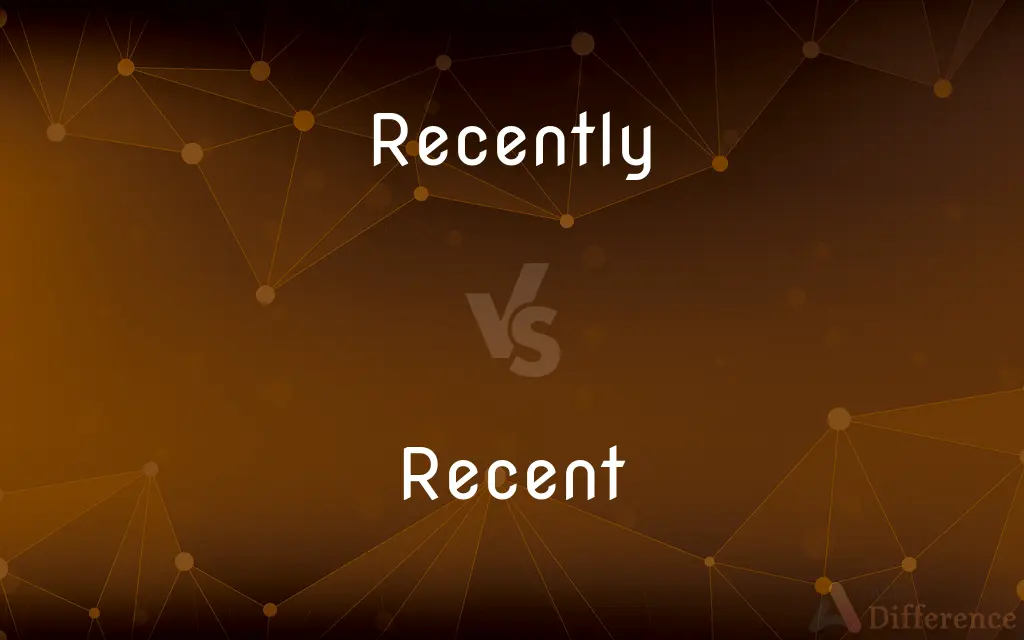In an era of instant information, the news cycle often brings us face-to-face with the stark realities of recent crimes. From local incidents that shake communities to high-profile cases that capture national attention, understanding the landscape of criminal activity is more crucial than ever. This article delves into the complex world of crime, exploring notable cases, emerging trends, and the vital role of journalism in keeping the public informed.
As we navigate daily life, reports of breaking crime cases, criminal investigations, and true crime stories are never far from our screens. Whether it's the latest developments in an unsolved murder or updates on public safety concerns, staying informed helps us grasp the challenges and efforts involved in maintaining peace and order within our societies.
Table of Contents
- The Evolving Narrative of Recent Crimes
- Spotlight on High-Profile Recent Crimes
- Deconstructing Crime Trends and Patterns
- The Broader Implications of Recent Crimes on Society
- The Indispensable Role of Independent Journalism
- Understanding True Crime and Unsolved Cases
- Public Safety and Community Response to Recent Crimes
- Staying Informed and Fostering Resilience
The Evolving Narrative of Recent Crimes
The way we consume news about crime has undergone a significant transformation. What was once confined to local newspapers or evening broadcasts now unfolds in real-time across countless digital platforms. Newsweek, for instance, highlights its commitment to "covering crime stories from every angle," from local incidents to those of national interest. This comprehensive approach reflects a broader shift in how media outlets address the complexities of criminal activity, ensuring that audiences receive a multifaceted view of recent crimes.
- Oprah Weight Loss Special
- Nikki Catsouras Photos
- Dungeons And Dragons Cast
- Lara Croft Movie
- How Did Bernie Mac Die
This evolution is not just about speed; it's also about depth and accessibility. Readers can now "explore a map of recent crime by location," pinpointing activity down to neighborhood levels, including arrests, arson, assault, burglary, robbery, shooting, theft, vandalism, and rape. This granular data empowers communities and individuals to understand specific risks and trends in their immediate surroundings, moving beyond generalized fear to informed awareness. The availability of such tools signifies a proactive step in public safety communication, allowing for a more nuanced understanding of where and how criminal acts are occurring.
How News Coverage Has Changed
The landscape of crime reporting has changed dramatically over the years. Social media, 24/7 news cycles, and citizen journalism have reshaped how stories are gathered, disseminated, and consumed. While traditional outlets like NBCNews.com continue to provide in-depth coverage of "latest unsolved criminal cases, murders, kidnappings, true crime stories," the immediacy of digital platforms means that breaking crime cases can go viral within minutes. This rapid dissemination, while beneficial for awareness, also necessitates a greater emphasis on accuracy and verification from reputable sources. The challenge for news organizations now is not just to report, but to contextualize and verify information in a saturated environment, ensuring that the public receives factual and unbiased accounts of recent crimes.
Spotlight on High-Profile Recent Crimes
Certain cases, due to their unique circumstances, the individuals involved, or their broader implications, capture significant public and media attention. These high-profile recent crimes often become focal points for discussions on justice, law enforcement, and societal issues.
The Karen Read Acquittal: A Landmark Case
One such case that recently dominated headlines was the trial of Karen Read. As the "Data Kalimat" states, "Crime Karen Read speaks after acquittal a jury on Wednesday found Karen Read not guilty of murder and manslaughter in the 2022 death of her police officer boyfriend." This verdict, reached after an intense and widely publicized trial, highlights the complexities of the justice system and the rigorous process required to prove guilt beyond a reasonable doubt. The case garnered extensive media coverage, with outlets like CBS News and AP News providing continuous updates, underscoring the public's keen interest in its unfolding narrative. The acquittal sparked conversations about forensic evidence, witness testimony, and the role of public perception in high-stakes legal battles, making it a significant reference point when discussing recent crimes and their judicial outcomes.
Other Unfolding Investigations: From Kohberger to Federal Complaints
Beyond the Karen Read case, numerous other criminal investigations continue to unfold, keeping the public engaged and informed. CNN coverage of "crime and justice" frequently reports on such cases, including the ongoing Bryan Kohberger murder case, where a "potential witness... appears to say she saw him at the scene, police video shows." These details, often emerging from police video or court documents, provide critical insights into the investigative process and the painstaking efforts to piece together events.
Moreover, the "Data Kalimat" references "Federal complaints charge SoCal residents with assault, throwing Molotov cocktails at officers during recent civil unrest." This points to the broader spectrum of criminal activity, extending beyond individual acts to incidents tied to larger social or political contexts. Such cases underscore the challenges faced by law enforcement in maintaining order and protecting citizens during periods of unrest. Additionally, the mention of a "Man sentenced for 2020 'execution style' murder in Norcross" reminds us that justice, though sometimes slow, often prevails, bringing closure to horrific acts even years after they occur. These diverse examples illustrate the wide range of recent crimes that demand public attention and journalistic scrutiny.
Deconstructing Crime Trends and Patterns
Understanding recent crimes goes beyond individual cases; it involves analyzing broader trends and patterns that can inform prevention strategies and public safety initiatives. Data-driven insights are crucial for effective policymaking and community engagement.
Visualizing Local Crime Activity
The ability to "explore a map of recent crime by location" offers an invaluable tool for both law enforcement and the public. This map "shows crime incident data down to neighborhood crime activity including arrest, arson, assault, burglary, robbery, shooting, theft, vandalism, and rape." By visualizing where and how different types of crimes occur, authorities can allocate resources more effectively, deploying patrols to high-risk areas or implementing targeted community programs. For residents, this data fosters a heightened sense of awareness, allowing them to make informed decisions about their safety and participate more actively in local crime prevention efforts. This granular approach to understanding crime patterns is a significant step forward in proactive public safety.
The Broader Implications of Recent Crimes on Society
The impact of recent crimes extends far beyond the immediate victims and perpetrators. They ripple through communities, affecting public perception, trust in institutions, and even daily routines. For instance, the New York Post's observation that "Subway crime starts at the turnstile — and Democrats fail the test June 18, 2025" highlights how specific crime trends, like those on public transit, can become political issues, reflecting broader debates about urban safety and governance. Such discussions are critical as they influence policy decisions, funding for law enforcement, and the overall quality of life in metropolitan areas. The psychological toll of living in an environment perceived as unsafe can be significant, leading to changes in behavior, reduced community engagement, and a general sense of unease. Addressing these broader implications requires a holistic approach that considers not only law enforcement but also social programs, economic opportunities, and mental health support.
The Indispensable Role of Independent Journalism
In the complex world of crime and justice, independent journalism serves as a critical pillar of democracy, providing factual, unbiased, and timely information. The Associated Press (AP) exemplifies this role, being an "independent global news organization dedicated to factual reporting." Founded in 1846, AP "today remains the most trusted source of fast, accurate, unbiased news in all formats and the essential provider of the technology and services vital to the news business." Similarly, Reuters.com positions itself as "your online source for the latest news stories and current events, ensuring our readers up to date with any breaking news developments."
These organizations, along with others like CNN, NBC News, CBS News, and People.com, play a crucial role in covering recent crimes. They not only report the facts but also delve into the context, providing analysis of criminal investigations, legal proceedings, and the broader societal implications. Their commitment to independent reporting ensures that the public receives reliable information, enabling informed discussions and holding power accountable. Without such dedicated journalistic efforts, understanding the nuances of criminal activity and the pursuit of justice would be significantly hampered.
Understanding True Crime and Unsolved Cases
The public's fascination with true crime stories is undeniable, fueled by a desire to understand the darker aspects of human behavior and the pursuit of justice. From "missing person cases" to "the hunt for serial killers," these narratives offer a glimpse into real-life mysteries and the painstaking work of investigators. NBCNews.com, People.com, and CBS News regularly feature "true crime sagas" and "cold cases," keeping the memory of victims alive and sometimes even generating new leads through public awareness. These stories, while often grim, serve an important purpose: they highlight the enduring impact of crime, the resilience of survivors, and the unwavering dedication of those who seek answers. The ongoing nature of "unsolved criminal cases" reminds us that justice is not always swift, and some mysteries persist, prompting continuous efforts from both law enforcement and the public to bring resolution.
Public Safety and Community Response to Recent Crimes
The immediate aftermath of recent crimes often triggers a heightened focus on public safety and community response. Local authorities and community leaders work to reassure residents, implement preventive measures, and foster a sense of collective responsibility. This can involve increased police presence, community watch programs, and public forums to discuss concerns and solutions. The goal is not just to apprehend perpetrators but also to restore a sense of security and normalcy. Effective public safety strategies are often collaborative, involving law enforcement, local government, non-profit organizations, and engaged citizens working together to address the root causes of crime and build more resilient communities. The dialogue around "violent crime news and press releases" often emphasizes the importance of community engagement in preventing future incidents.
Staying Informed and Fostering Resilience
In an age where information about recent crimes is constantly flowing, staying informed through reliable sources is paramount. Google News, for instance, allows users to "stay updated on crime news with full articles, videos, and more," aggregating content from various reputable outlets. Similarly, USACrime Daily provides "the latest breaking news headlines on violent crimes in the USA today and from around the world." Access to such comprehensive and timely information empowers individuals to understand the realities of crime without succumbing to sensationalism or misinformation.
Beyond mere awareness, fostering resilience in the face of criminal activity is key. This involves not only understanding potential risks but also knowing how to react, how to support victims, and how to contribute to a safer environment. By engaging with factual reports, participating in community safety initiatives, and advocating for effective policies, individuals can move from passive observers to active participants in the ongoing effort to combat crime and build stronger, more secure societies.
Conclusion
The landscape of recent crimes is complex and ever-evolving, encompassing everything from high-profile trials like the Karen Read acquittal to ongoing investigations and broader societal trends. Understanding these dynamics requires reliable information, which is consistently provided by independent journalistic organizations such as AP News, Reuters, CNN, and NBC News. By staying informed about criminal cases, public safety concerns, and the efforts to bring justice, we empower ourselves and our communities.
We encourage you to continue exploring the nuances of crime and justice. What are your thoughts on the impact of recent crimes in your community? Share your perspectives in the comments below, or delve deeper into related articles on our site to further your understanding of this critical subject.
- Nikki Catsouras Photos
- Blake Lively In Sisterhood Of The Traveling Pants
- Steve Blues Clues
- Bill Gates Net Value
- How Old Is Nba Youngboy

![4 Ways to Clear Recents on Mac Finder [with Bonus Tip] - EaseUS](https://www.easeus.com/images/en/screenshot/data-recovery-mac/clear-recents-folder-mac.png)
